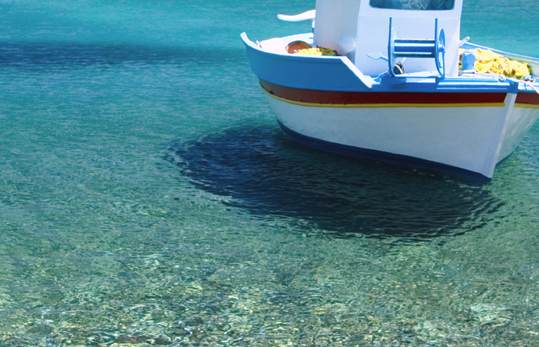Patmos Island
Patmos is known as the “Island of the Apocalypse” and attracts tourists from all over the world just for this reason. However, it is a very picturesque island, with traditional white houses, crystal blue waters, vibrant nightlife and gastronomic surprises.
Cave of the Apocalypse
It is believed to have been the sacred cave where Saint Ioannis heard the voice of God and wrote the Apocalypse. In the cave, visitors can admire the cross engraved by Saint Ioannis, as well as the three small cracks on the rock through which the voice of God came, symbolizing Holly Trinity. A visit to the Cave is really a unique unforgettable experience.
Saint Ioannis Theologos Monastery
Built in the 11th century, this monastery dominates the high cliff above the island capital and resembling a medieval castle. The monastery has been declared a world heritage monument by UNESCO. It houses 10 chapels, a laboratory of pottery, the Ecclesiastical Museum with a treasure of orthodox icons, embroideries and objects used for religious purposes.
Ecclesiastical Museum
Located in the monastery of Saint Ioannis, the Ecclesiastical Museum houses a treasure of religious objects including icons, church utensils, vestments and embroideries, as well as important manuscripts.
Ancient Acropolis – Kastelli
Strategically situated at the northern part of Hora, the ancient acropolis has a view to all three bays (Skala, Hohlaka and Merika), while it is dated back to the Middle Bronze Period. Visitors can see the ruins of the ancient fortification wall, towers and one gate, but Kastelli is also the ideal place to watch the sunset.
Aspris (or Lefkis) Bay
In this area of Western Patmos, ruins of prehistoric accommodations have been discovered. A genuine travel back to time!
Rock of Kalikatsous
On this rock featuring carved stairs, caves and wells, ceramic utensils of 1100 B.C. have been found as well as tools made of stone.
Folklore Museum
Housed in the Semantiris Residence, built in the 17th century by craftsmen from Smyrni, the Museum hosts paintings, old furniture and objects of the island’s everyday life through the centuries.
Skala
Skala is the port of the island, pretty famous for its unique architecture. Among its beautiful buildings, the “Italian” building that houses the Post Office, the Hellenic Tourism Organization and local authorities stands out. It was built in 1932, boasts a three-floor tower and many arches at the ground floor.
Patmos Hora
The island’s capital is among the most picturesque island capitals in Greece. With its whitewashed houses of traditional Greek insular architecture and its mansions made of stone, Hora is connected to Skala with a narrow street. At Hora, visitors can also see the house of Emmanuel Xanthos, one of the founders of “Filiki Eteria”.
Christmas in Greece is an experience in itself as it is a holiday celebrate...
Read more ›








 BACK TO LIST
BACK TO LIST